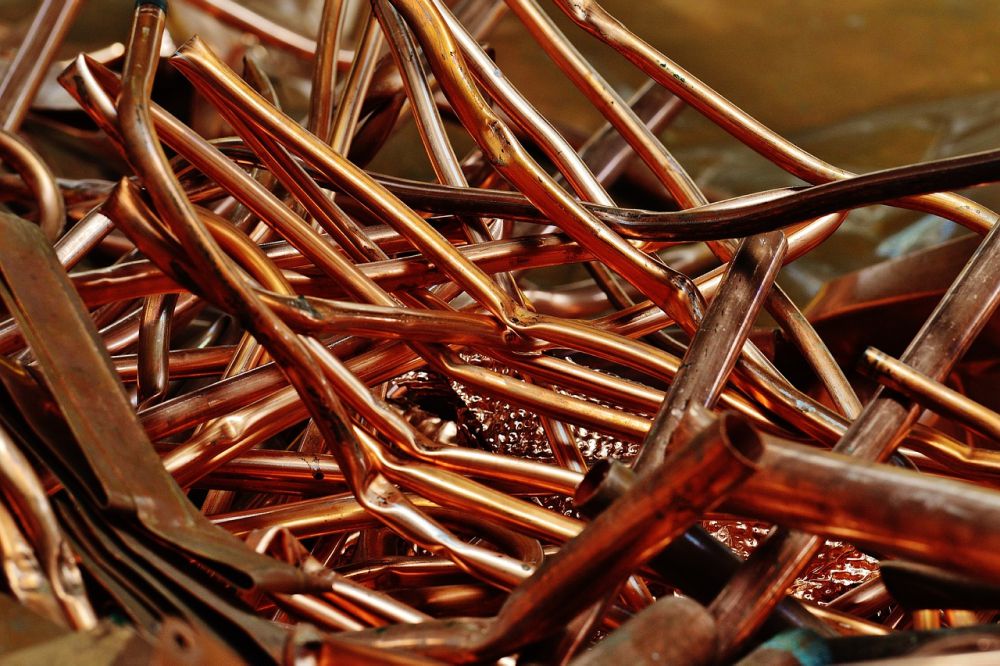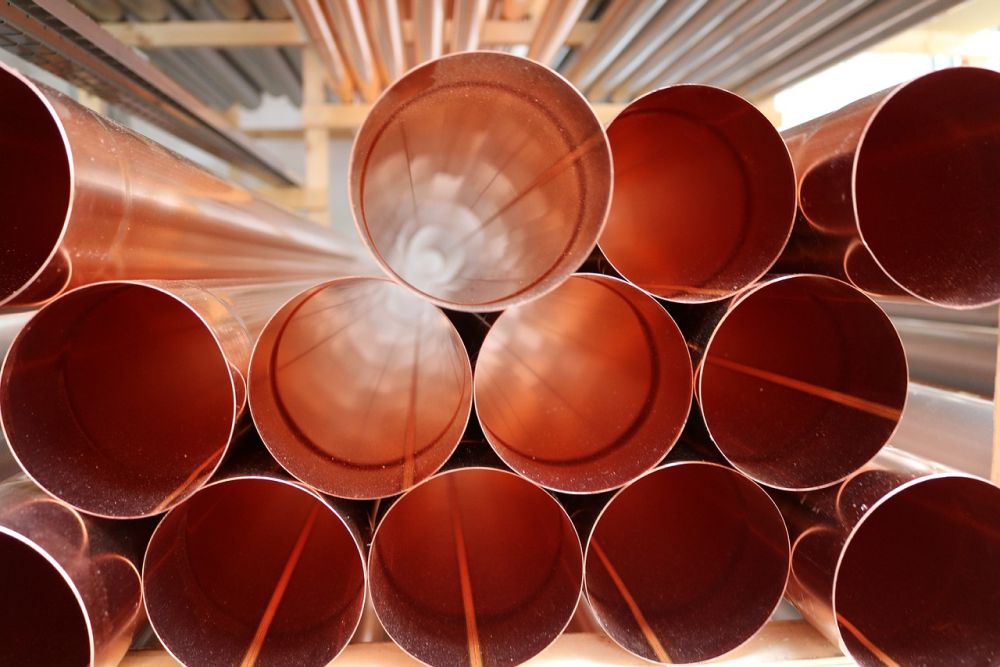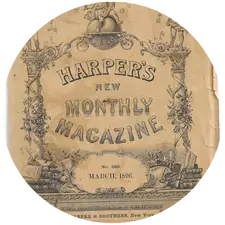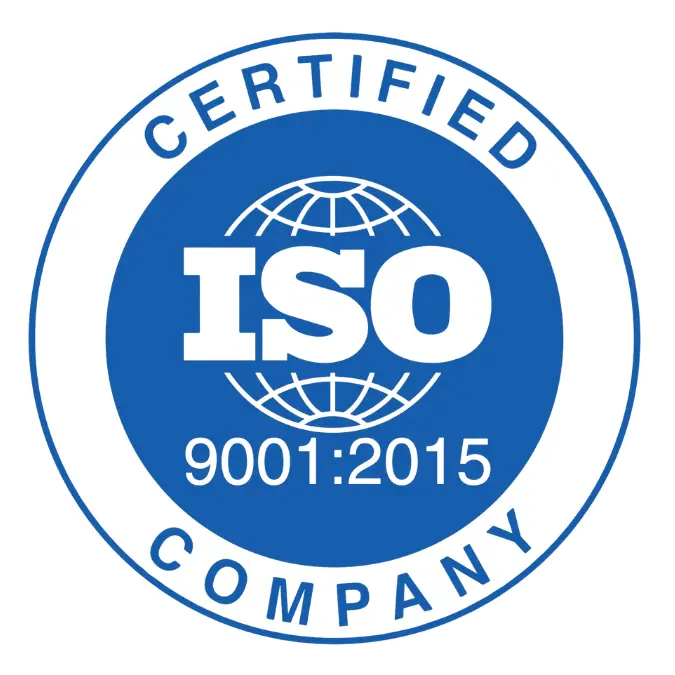In modern manufacturing and technology, copper is an indispensable material. From powering our homes through electrical systems to ensuring clean water delivery via plumbing networks, copper’s versatility is unmatched. Given its widespread applications, confirming copper purity becomes essential for optimal performance and longevity.
This article will present 6 reliable methods and address the question “How to tell if something is real copper?”, from simple DIY approaches to sophisticated laboratory analysis.
Why Identifying Real Copper Matters?
The authenticity of copper dramatically influences its performance in numerous sectors. Conducting a copper quality test helps ensure that the material meets the purity standards required for optimal function across these critical applications:
- Electrical Applications: Nothing matches copper’s ability to conduct electricity efficiently. Minor contaminants can severely impact its conductivity, leading to increased power consumption and potential system inefficiencies.
- Plumbing Systems: Genuine copper brings natural antimicrobial properties to plumbing installations. Its corrosion resistance ensures system durability while maintaining water quality standards across varying pressure and temperature conditions.
- Industrial Processing: Manufacturing excellence depends on precise copper grades. Even slight impurities can compromise welding integrity, affect mechanical characteristics, and diminish overall product reliability.
- Investment Value: In the metals market, pure copper commands premium prices. Authentication capabilities protect investments by ensuring fair market valuations.
- Environmental Impact: Pure copper facilitates superior recycling outcomes. Higher purity levels streamline the recycling process and support sustainable manufacturing practices.
How To Test Pure Copper: Top 6 Methods
Wondering how to tell if something is real copper? This guide covers the top 6 ways to perform a test for copper – from visual checks to advanced techniques – ensuring authenticity with confidence.
1. Visual Test
Visual inspection serves as the initial step in copper authentication. Pure copper exhibits a distinctive reddish-orange hue immediately recognizable to experienced observers.
When performing a copper quality test using visual methods, remember to:
- Look for a warm, salmon-pink to reddish-orange color that remains consistent across the entire surface
- Check for a smooth, uniform texture without suspicious variations or irregularities
- Observe the natural patina formation – genuine copper develops a characteristic greenish-blue oxide layer over time
- Examine cut edges and surfaces for consistent coloration throughout
- Watch for any signs of plating, such as flaking or uneven wear patterns
2. Physical Properties Test
Physical property testing provides comprehensive insights into copper authenticity through multiple characteristics:
Color Properties
- Authentic copper displays a distinct salmon-pink to reddish-orange hue
- Color should remain consistent when scratched or cut
- Examine under different lighting conditions for consistent appearance
- Check for uniform coloration across all surfaces
- Compare with verified pure copper samples

Density Characteristics
- Pure copper’s specific gravity measures 8.96 g/cm³
- Conduct water displacement tests for precise measurements
- Compare weight-to-volume ratios with standard values
- Use calibrated equipment for accurate measurements
- Document and verify results against standards
Electrical Properties
- Test conductivity using calibrated equipment
- Measure resistance values and compare them to standards
- Verify temperature coefficients of resistance
- Check for consistent readings across samples
- Document all test conditions and results
3. Specialized Physical Tests
Magnetism Assessment:
- Use a strong neodymium magnet for testing
- Pure copper shows no magnetic attraction
- Test multiple areas of the sample
- Compare with known pure samples
- Document any magnetic responses
Oxidation Verification:
- Clean the surface thoroughly before testing
- Observe natural oxidation patterns
- Monitor color changes over time
- Compare with verified samples
- Record oxidation progression
Acoustic Testing:
- Strike sample with non-damaging implement
- Listen for a characteristic dull sound
- Compare with known pure samples
- Note any unusual resonances
- Document sound characteristics
Surface Examination:
- Feel for a smooth, waxy texture
- Check for consistent surface quality
- Identify any irregular areas
- Compare with verified samples
- Record surface characteristics
4. Resistance Test
Electrical resistance testing offers a quantitative approach to copper verification:
- Use a calibrated multimeter for resistance measurements
- Ensure proper contact and connection points
- Take multiple readings across different areas
- Compare results with standard values (1.68 × 10⁻⁸ ohm-meters)
- Account for temperature effects on readings
- Document all test conditions and results
- Verify equipment calibration before testing
- Consider environmental factors affecting measurements

5. Acid Test
Chemical verification through nitric acid testing requires careful handling and should only be performed by trained professionals. This test involves several critical steps:
- Clean the test surface thoroughly
- Apply a single drop of nitric acid
- Observe the immediate color reaction
- Watch for blue-green color development
- Time the reaction progression
- Compare with known pure samples
Caution: This test involves hazardous chemicals and should not be attempted at home or as a DIY project. Always follow strict safety protocols, use proper protective equipment, and ensure adequate ventilation.
Documenting the reaction characteristics is crucial for accurate analysis. For safety and precision, seek professional testing services.
6. Laboratory Testing with an ISO 17025 Accredited Lab
If you’re leveraging copper for investment or manufacturing purposes and need a reliable partner to test its quality, a professional laboratory equipped with ISO 17025 accreditation is the perfect choice for a safe, time-saving, and accurate analysis you can trust. ISO 17025 accredited laboratories offer:
Advanced Testing Methods:
- Precision spectrometry analysis
- XRF spectroscopy
- Chemical composition testing
- Metallographic examination
- Electron microscopy analysis
Quality Assurance:
- Globally recognized standards
- Calibrated equipment and procedures
- Comprehensive documentation
- Traceable results
- Professional certification
Applications:
- Industrial quality control
- Research and development
- Regulatory compliance
- Investment verification
- Manufacturing process control
Copper Concentrates Testing
Ledoux & Co offers specialized copper concentrates testing through our ISO 17025 accredited facility, ensuring precise and reliable results. We provide comprehensive metallurgical analysis, including elemental analysis, moisture content determination, particle size distribution, impurity profiling, and grade certification. Our advanced testing methodologies are complemented by expert interpretation and detailed certification reports.
With rapid turnaround options, we are committed to delivering high-quality, accurate results to meet your specific testing needs. The ISO 17025 accreditation guarantees that our laboratory meets the highest standards for technical competence and reliability, giving you confidence in the accuracy and validity of our tests.
Expert Metallurgical Analysis with Ledoux
Ledoux & Co brings over a century of expertise to copper testing. With an ISO 17025-accredited lab, we offer thorough purity verification and state-of-the-art testing capabilities.
Our team provides expert metallurgical consultation, ensuring accurate and reliable results. We deliver comprehensive analysis certificates and rapid results, all while maintaining competitive service rates.
Whether you need detailed purity assessments or specialized testing, Ledoux & Co offers the experience and advanced technology to meet your copper testing needs efficiently and affordably. Trust us for precise, fast, and cost-effective solutions.
Conclusion
Verifying copper purity can be simple. While simple tests provide useful initial guidance, professional laboratory analysis remains the ultimate standard for conclusive results. Choose your testing approach based on specific requirements, applications, and quality demands.
Connect with Ledoux & Co. to explore your testing needs or submit samples for analysis. Our team stands ready to ensure your copper meets the highest quality standards.
FAQs
- How can I quickly check if my copper is pure?
→ Visual inspection and physical tests provide initial indicators, but laboratory testing offers definitive results. - What’s the most reliable method to test copper purity?
→ Laboratory testing using spectrometry or XRF analysis provides the most accurate results. - Can I test copper purity at home?
→ Yes, through visual inspection, physical properties tests, and basic resistance measurements, however, those results won’t be as accurate as laboratory testing. - Why is copper purity important?
→ Purity directly affects performance in electrical, plumbing, and industrial applications, impacting efficiency and longevity. - How often should I test copper materials?
→ Testing frequency depends on your application, quality requirements, and industry standards. Consult with our experts for specific recommendations.













